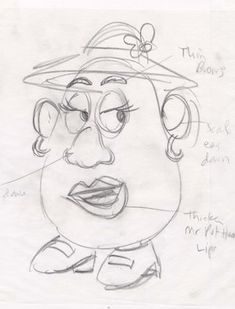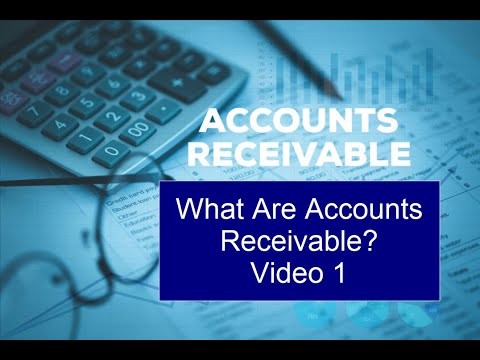How to calculate cost per unit
Contents:


For example, in a clothing manufacturing facility, the variable costs may include raw materials used in the production process and direct labor costs. If the raw materials and direct labor costs incurred in the production of shirts are $9 per unit and the company produces 1000 units, then the total variable costs are $9,000. It is prudent business practice to convert as many variable costs to fixed costs in order to be able to price your goods efficiently. To convert foreign exchange exposure from a variable to a fixed cost you will need to adopt a foreign exchange hedging policy. In order to determine cost per sale from a consumer price it is simply a matter of deducting the gross margin from 100% to give a percentage cost per sale. So, if you wish to make a gross markup of 40%, the cost is 60%.
The sum of the manufacturer’s fixed and variable costs, i.e. the total cost of production, comes out to $600,000. The calculation of cost per unit gives a detailed insight into the total costs to manufacture a single item, store it, ship it, and more. This will also help you to detect the inefficiencies that are increasing the cost. If the per-unit cost is low, then it suggests efficient production and logistics. In general, based on the cost per unit, most businesses set the selling price of the product, keeping the profit in mind.
Companies can calculate the contribution per unit for every product manufactured or purchased. While online calculators can be a big help when you’re just starting a business, it’s important to understand how to calculate variable costs and how the formula works. Examples of variable costs can include the raw materials required to produce each product, sales commissions for each sale made, or shipping fees for each unit. To find Company X’s average variable cost, you have to divide the sum of total variable costs by the sum of the number of units made. Now that you know the total variable costs and the number of units made for each product, it’s easy to work out the variable cost per unit.
Bi-objective bus scheduling optimization with passenger perception … – Nature.com
Bi-objective bus scheduling optimization with passenger perception ….
Posted: Thu, 13 Apr 2023 16:57:49 GMT [source]
This is why ecommerce companies that sell their own goods must calculate and monitor their cost per unit over time. For Greg and many other retail businesses, success is heavily reliant on having a profitable cost per unit — and half of that battle is keeping your costs low. It’s best to compare unit prices on products that are of a comparable quality.
The U-shaped Average Total Cost Curve
LIFO reduces the tax, but only a few businesses want to sell or use the newest stock before the old inventory is over. Where Ordering Cost denotes the cost of placing an order and Holding Cost denotes the cost of stocking inventory. Businesses can find the most cost-effective order quantity to balance the cost of holding inventory and the cost of ordering by minimizing the total cost.
The quantity might be per item or per unit of measurement, such as ounces, grams, gallons, or liters. To calculate the unit price, simply divide the cost of the product by the quantity you’re receiving or check the store’s shelf label. Then, compare the unit prices of 2 or more packages of the same product to see which is the better value. Since the total fixed cost is fixed, the more you produce, the average fixed cost per unit will decrease further.
Typically, https://1investing.in/s that are of lesser quality will have a lower unit cost. You might still choose to purchase the less expensive item. However, consider the quality of the items when making a final purchasing decision. Alternatively, a family-sized box of cereal is a better deal at a unit price of $0.15 versus a smaller box at a unit price of $0.19. As an example, if a 6-roll pack of toilet paper has a unit price of $0.77 and the 9-roll pack has a unit price of $0.81, the 6-roll pack is the best choice.
How to Calculate Break Even Point in Units
The breakeven sale price should be computed over a range of production and sale quantities using the formula below. The total cost of $20,000, we can produce 5000 chocolate bars. Therefore, the average cost for the production of 5000 chocolate bars is $4. The relationship between the average total cost curve and marginal cost curve is illustrated in Figure 2 below.
accounting equation expectations can vary based on the pricing strategy, but a typical range is about 50% for dry goods, 25-30% for produce/dairy and 40-50% for frozen. At the early stage of your business, prioritize cost-saving whenever possible. It will take time to finalize decisions about recipe formulation, packaging, label, and distribution before the business generates income.
As the Willy Wonka chocolate firm produces more chocolate bars, the total costs are increasing as expected. Similarly, we can see that the variable cost of 1 unit is $6, and the average variable cost increases with each additional unit of chocolate bar. The fixed cost equals $54 for the 1 unit of chocolate, the average fixed cost is $54. As we learn, the average fixed costs decrease as the total quantity increase. Let’s say Company X is working on forecasting its expenses.
How to calculate cost per unit?
Clover Product Suite Customized point of sale systems that make your business operations easy. Talus Pay POS Everything from basic payment processing to inventory management and customer management—even for multiple locations. PAX A920 Terminal Customer-facing terminals that are easy to use, EMV-ready, and chock-full of convenient functionality. SwipeSimple Card Reader Mobile card readers that make fast, secure transactions a reality even when your business is on the go.
Gross profit shows the amount of money a company has made after subtracting unit costs from its revenue. Gross profit and a company’s gross profit margin are the leading metrics used in analyzing a company’s unit cost efficiency. A higher gross profit margin indicates a company is earning more per dollar of revenue on each product sold. A company’s financial statements will report the unit cost. Companies that manufacture goods will have a more clearly defined calculation of unit costs while unit costs for service companies can be somewhat vague. A unit cost is a total expenditure incurred by a company to produce, store, and sell one unit of a particular product or service.
How to Calculate Total Cost Formula?
Here’s everything you need to know about your business costs and how to calculate them. It might not be fun, but calculating your fixed costs on a regular basis will benefit your business in the long run. Having a finger on the pulse of your business metrics will be crucial to happily serving your customers for years to come. You started a small coffee shop that specializes in gourmet roasted coffee beans.

Some products will be sold by item, such as toilet paper, paper towels, or pencils. However, most items will have a unit of measurement, like ounces, cups, quarts, gallons, milliliters, liters, etc. Levels of output, the spreading effect dominates the diminishing returns effect. A linear function for estimating costs could give incorrect values.
An equation for calculating the cost of production using specified values for materials and labor costs is derived. When a company finds it hard to separate direct materials stock according to the date of purchase, the weighted average method is employed. Direct material can be tracked unit by unit using specific identification. It doesn’t work for certain materials and is time-consuming. Using standard costing to estimate direct materials helps the company plan future sales and profitability at assumed conditions.
Fixed costs will stay relatively the same, whether your company is doing extremely well or enduring hard times. As production or sales fluctuate, fixed costs remain stable. Think of them as what you’re required to pay, even if you sell zero products or services. Unlike fixed costs, which remain the same no matter how much you produce, variable costs increase the more you produce.
- Talus Pay Advantage Our cash discount program passes the cost of acceptance, in most cases 3.99%, back to customers who choose to pay with a credit card.
- Like you did with the fixed costs, use your profit and loss account, to sum up, your variable expenses.
- You’ll need to pay for the rent of your garage, utility bills to keep the lights on, and employee salaries.
- As an example, when you’re looking at an 8 oz bottle of olive oil that costs $5.79, you might see a unit price of $0.72 printed in small type in the corner of the label.
The total cost includes the variable cost of $9,000 ($9 x 1,000) and a fixed cost of $1,500 per month, bringing the total cost to $10,500. A unit cost is the total expenditure spent to produce an individual unit of goods or services. This is determined by adding fixed costs with variable costs for production or service delivery.

The break-even point allows a company to know when it, or one of its products, will start to be profitable. If a business’s revenue is below the break-even point, then the company is operating at a loss. Goods-centric unit cost measures will vary between businesses. Adding up all of these costs account for total manufacturing overhead.
